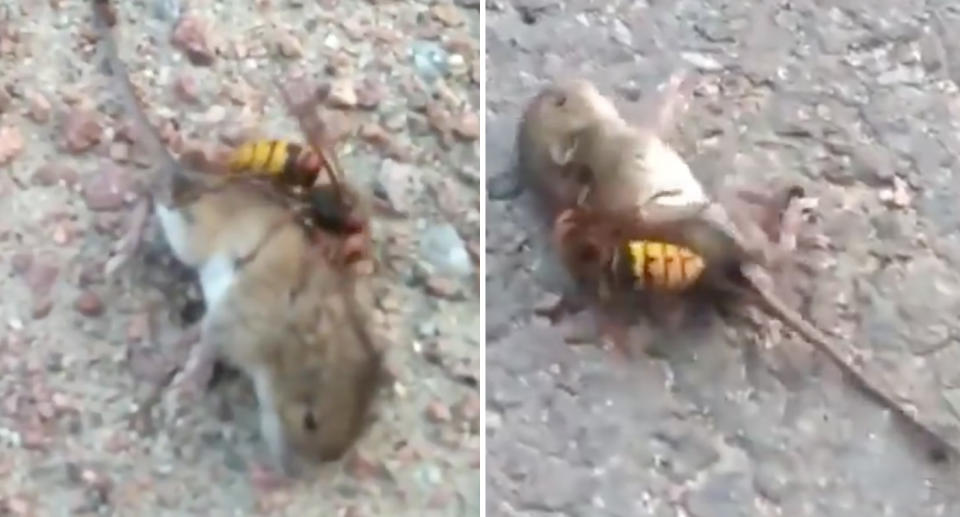Shocking video shows 'murder hornet' with killer sting taking down mouse
Confronting footage has exposed a giant deadly hornet’s vicious takedown of a mouse at least four times its body size.
The species has been dubbed the murder hornet and normally attacks bees, but on this occasion the two-inch creature appeared determined to decimate a bigger target.
In a video shared to Twitter of the tussle that lasted about one minute, the monster insect seemed to inflict several stings to the rodent, which failed in its attempts to wriggle out of its grasp.
While the exact location of the kill is not known, the hornets have recently been found in the US state of Washington, DC, where entomologists have been making plans to wipe them out.
The giant Asian insect, with a sting that could be fatal to some people, has started to emerge from winter hibernation.
“They’re like something out of a monster cartoon with this huge yellow-orange face,” Susan Cobey, a bee breeder at Washington State University said.
'Surfer's beware': Theory behind grim photo of mutilated dolphin
'Alien eggs': Disturbing photo of pods in tree sparks debate online - but what are they?
'Bit of an unknown': Dog meat farm shutdown stalled by coronavirus restrictions
“It’s a shockingly large hornet. It’s a health hazard, and more importantly, a significant predator of honey bees,” Todd Murray, a WSU Extension entomologist and invasive species specialist said.
The hornet was sighted for the first time in the US last December, when the state department of agriculture verified two reports near Blaine, Washington, close to the Canadian border.

The hornet can sting through most beekeeper suits, deliver nearly seven times the amount of venom as a honey bee, and sting multiple times, the department said, adding that it ordered special reinforced suits from China.
The university said it isn’t known how or where the hornets arrived in North America. It normally lives in the forests and low mountains of eastern and southeast Asia.
It was dubbed the “Murder Hornet” in Japan, where it is known to kill people.
Their stings are big and painful, with a potent neurotoxin. Multiple stings can kill humans, even if they are not allergic, the university said.
The hornet’s life cycle begins in April, when queens emerge from hibernation, feed on plant sap and fruit, and look for underground dens to build their nests.
With Associated Press
Do you have a story tip? Email: newsroomau@yahoonews.com.
You can also follow us on Facebook, Instagram and Twitter and download the Yahoo News app from the App Store or Google Play.


